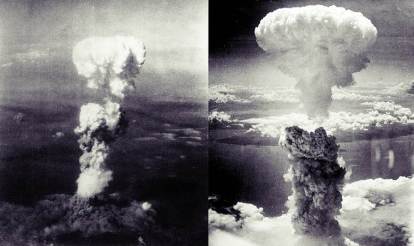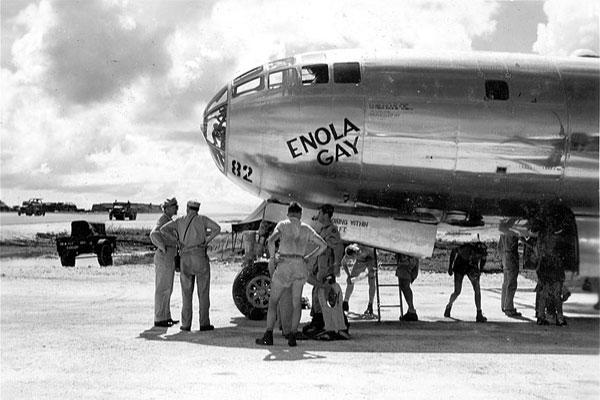The Enola Gay’s Historic Mission: A Detailed Look at the Moments Leading to the Hiroshima Bombing
On August 6, 1945, during World War II, the B-29 bomber named Enola Gay played a pivotal role in one of history’s most significant and devastating events. Here’s a detailed account of the moments leading up to and following the bombing of Hiroshima:

The Enola Gay Takes Flight
The Enola Gay, a B-29 Superfortress bomber, took off from Tinian Island in the Pacific Ocean early in the morning. The mission was to drop the first atomic bomb on Hiroshima, Japan.

Crew and Preparation
The aircraft was piloted by Colonel Paul Tibbets, who had named the plane after his mother, Enola Gay Tibbets. The crew underwent meticulous preparation for the mission, fully aware of the monumental impact it would have.

Approaching the Target
As the Enola Gay approached Hiroshima, the crew maintained strict radio silence to avoid detection. The city was chosen for its military importance and relatively untouched status, which would demonstrate the bomb’s devastating power.
The Bomb Drop
At 8:15 AM local time, the Enola Gay released the atomic bomb, nicknamed “Little Boy,” from an altitude of about 31,000 feet (9,450 meters). The bomb was set to detonate at a predetermined altitude to maximize its destructive impact.

Two Minutes Over Target
After releasing the bomb, the Enola Gay stayed over the target area for approximately two minutes. This brief period allowed the crew to observe the bomb’s descent and ensure the mission’s success.
Detonation and Distance
The bomb detonated at an altitude of about 1,900 feet (580 meters) above the city, creating a massive explosion. At the moment of detonation, the Enola Gay was approximately 16 kilometers (10 miles) away, rapidly flying away from the blast to avoid the shockwave and heat.
Observing the Aftermath
From their vantage point, the crew of the Enola Gay witnessed the enormous mushroom cloud rising over Hiroshima. The detonation unleashed an unprecedented level of destruction, obliterating the city and causing immense loss of life.
Impact and Legacy
The bombing of Hiroshima marked a turning point in World War II, leading to Japan’s eventual surrender and the end of the conflict. It also ushered in the nuclear age, highlighting the devastating power of atomic weapons and their implications for future warfare and global politics.
Historical Reflection
The Enola Gay’s mission remains a subject of intense historical analysis and ethical debate. The decision to use atomic bombs on Hiroshima and Nagasaki continues to evoke strong opinions about the balance between military necessity and humanitarian considerations.
In summary, the Enola Gay’s mission to Hiroshima was a meticulously planned operation with far-reaching consequences. The brief moments over the target and the subsequent detonation of “Little Boy” changed the course of history, leaving a legacy that continues to influence international relations and military strategy to this day.
